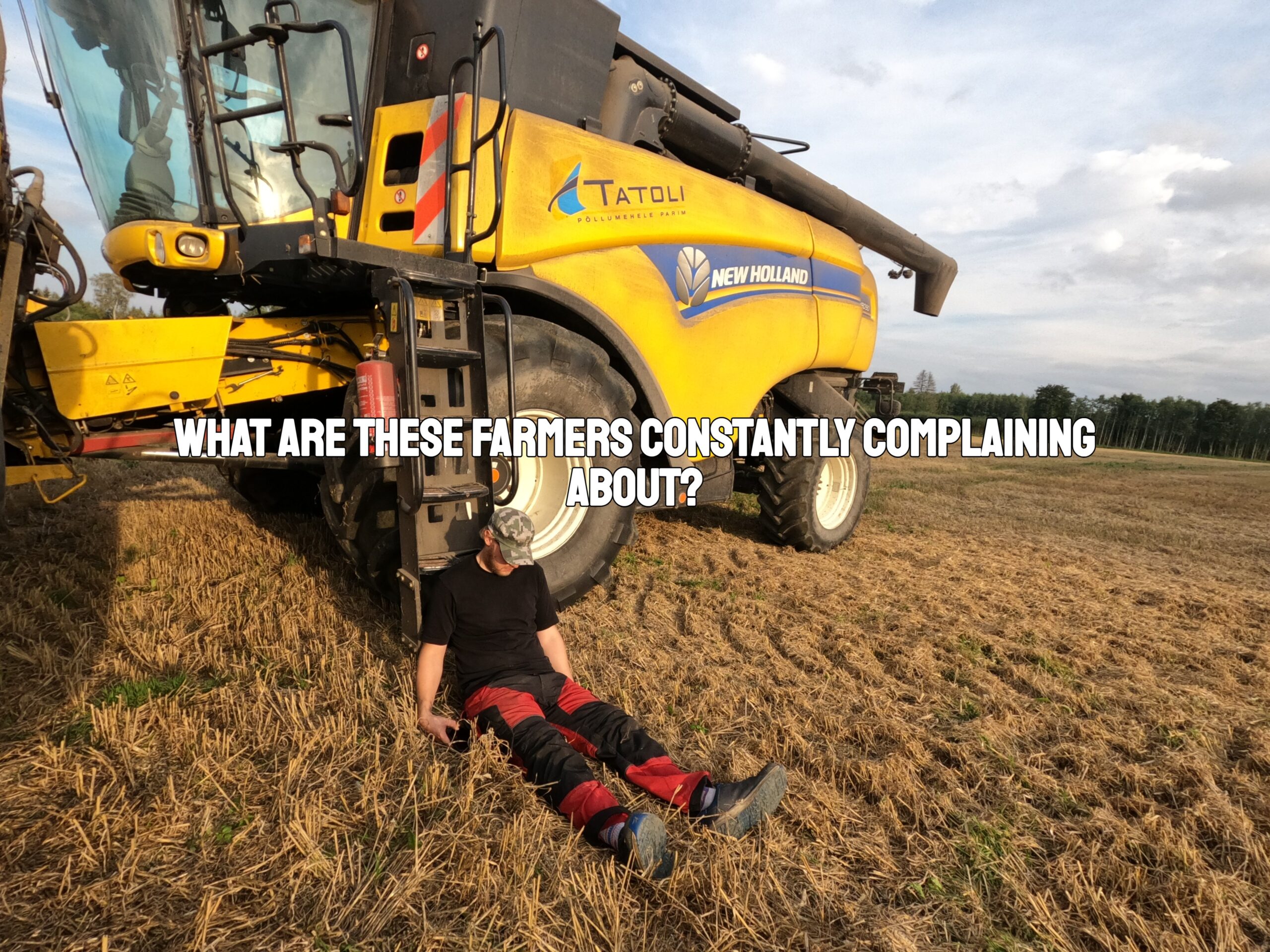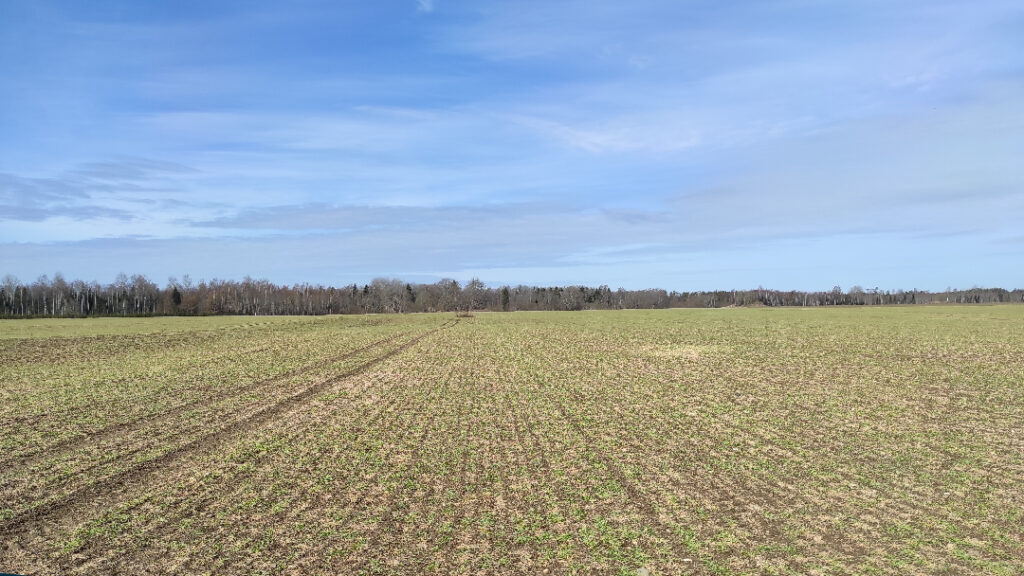According to Statistics Estonia, the average gross salary in Estonia was €887 in 2012, and in 2023, it will be in the range of €1868. A rise of 110%. A loaf of bread, whose main component is wheat flour, cost €0.44 in 2012, and in 2024, the same product costs €0.95. A rise of 110%. Why these numbers are significant in the context of agriculture will be explained in the following text.
Farmers always complain that either the harvest is too small or the price is too low. It’s especially bad when low prices and small yields coincide, and it’s very rare for there to be a large harvest with high prices. In Estonia, agricultural land covers about 1 million hectares, which compared to major European grain producers like Ukraine (41 million hectares) and, of course, on a global scale (India: 160 million hectares), is a tiny number. Therefore, our drought or exceptionally good years don’t affect the market.
Crops like wheat and rapeseed are tradable commodities on the stock market, and as is typical in markets, prices are determined by the balance of supply and demand, or at least that’s how it should be. It’s true that droughts and large yields in major grain-producing regions can raise or lower grain prices by dozens of euros, but political upheavals (such as the war in Ukraine) can increase grain prices by hundreds of euros, and market panics can similarly lower them.
Many farmers in Estonia remember the year 2012 when it was indeed a pretty good year, with high prices and a good harvest. Since then, prices have generally moved downward, with some ups and downs, but still mostly below the prices of 2012, until the onset of the war in Ukraine in 2022. Prices for food wheat even rose to €400 per ton and rapeseed hovered around €1000 per ton. It was an anomaly that was predicted to last long term, but in reality, there was a significant drop just six months after the start of the war.
And now I come back to why farmers (and also buyers’ seminar schedules) are nostalgic about the year 2012 – everyone remembers it as a very good year, and today grain prices are the same as they were 12 years ago, so everything’s fine, right? Or is it? What things have become cheaper compared to 2012?
Today, food wheat costs about €200 per ton, and it really seems like a magical threshold where one might say that it’s worth engaging in agriculture, doesn’t it?
I’ll make a list of things that cost more in 2024 than 12 years ago:
– Labor
– Machinery
– Spare parts
– Maintenance
– Pesticides
– Fertilizers (though not significantly)
– Purchase and rental prices of farmland
– Construction
– Fuel
So, all major inputs in agriculture cost more than they did in 2012. Let’s do a simple calculation: taking a global inflation rate of about 3% per year since 2012, and let’s see how much wheat should cost in 2024 to balance with inflation – the result is €285/ton. That’s over 40% higher than the current price, and generally, it can be said that the increase in production costs has been of the same magnitude or even greater.
Experienced farmers generally have a gut feeling about what grain should cost for production to be profitable – my gut feeling suggested around €250/ton or more, but €285/ton makes you shake your head.
Of course, observers would now ask, how to solve this situation?
I can’t change the price on the stock market, so I have two options – produce more or produce cheaper, ideally both at the same time. Unfortunately, producing more is largely up to the weather.
Here I present Statistics Estonia data showing the yield of winter wheat (the main cash crop) over the years. Yields have fluctuated, but generally, we’ve remained at a similar level as in 2012. 🤦 Today, it costs €1000 per hectare to produce winter wheat, compared to €700 twelve years ago. Profitability yield today is 5 t/ha, twelve years ago it was 3.5 t/ha. Let’s compare with statistics, which yield has been easier for us to achieve over the years?!
Producing cheaper is a tempting option, but still, all farmers have some fixed costs that must be covered one way or another, and if you don’t invest in the fields at all, the yield may be so small that you end up in the red or do a disservice to your most valuable asset, the soil, which negative results you feel for years afterward.
That’s why I’m currently investing, for example, in growing cover crops, which could bring lower costs for fertilizer and make the soils more drought-resistant. Unfortunately, this is a long process, the results of which I’ll see only years later.
Many would ask in response, but don’t you receive subsidies?! True, agricultural subsidies gradually increased until 2022; in 2023, a new period of subsidies began, and restructuring and new measures brought about a 30% decrease in support for producers, so we went back to the level of 2019. The aim of subsidies is to keep grain prices at a reasonable level so that as many people as possible have access to food. Today, it can indeed be said that subsidies (lack of market panic) have kept grain prices lower, but we don’t see this reasonable price in the store. Only farmers feel the “reasonable” price, whose profit margin is now nonexistent or even negative.
Am I complaining too much? I wouldn’t want to complain 😀 Rather, it could be a small insight for someone not familiar with agriculture to understand what’s happening in our sector and why colleagues in Europe are protesting. Recently, it was suggested that the Rural Development Foundation could offer long-term loans to alleviate the shortage of working capital, but I see it as extinguishing a bonfire with juice box – if low grain prices persist, negative production will continue. A good year may help us get back to the positive side, but it doesn’t solve the long-term problem of rising production costs.



